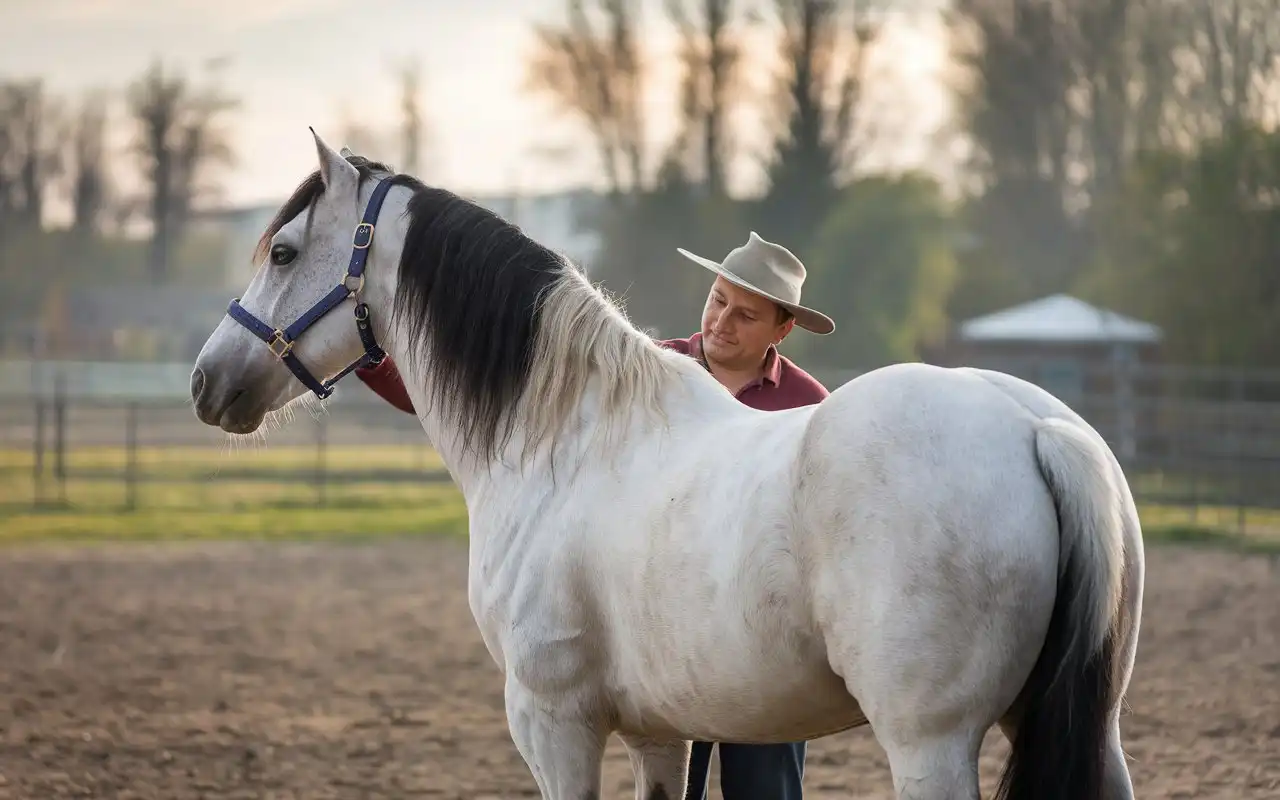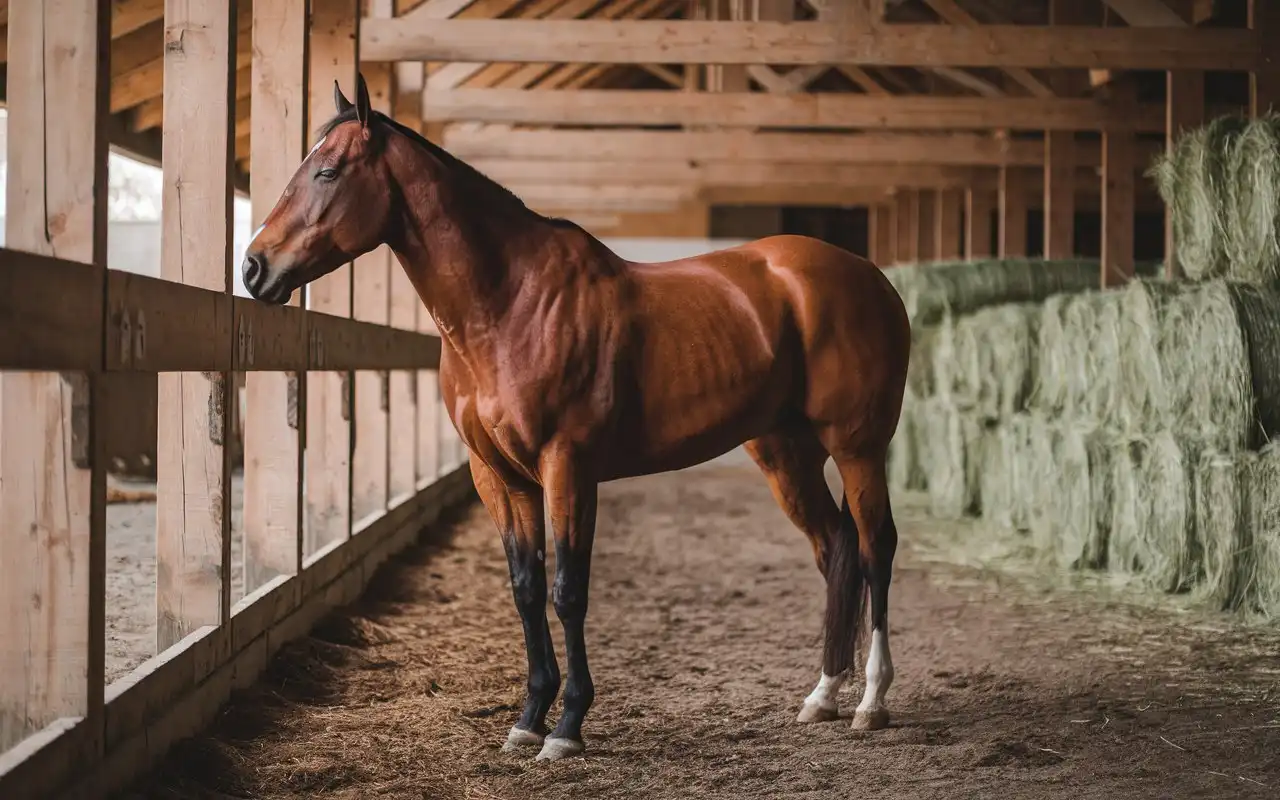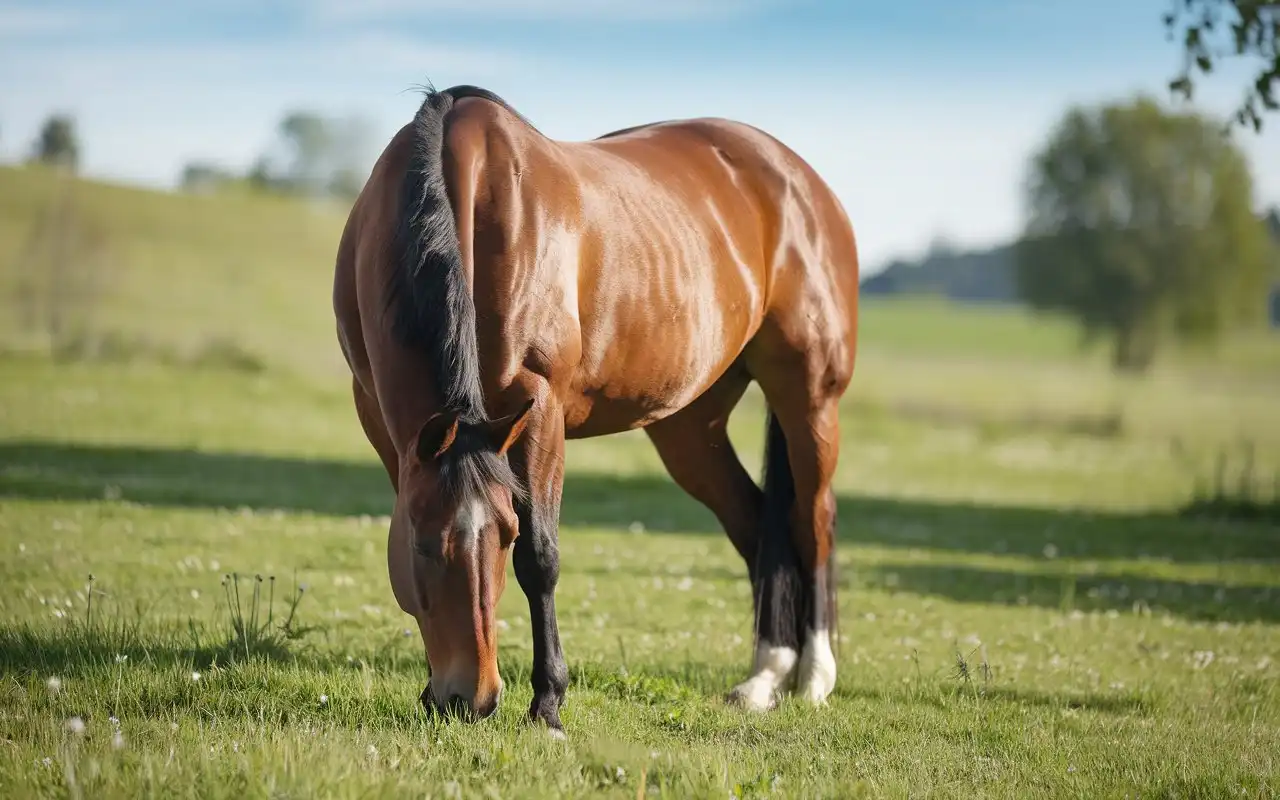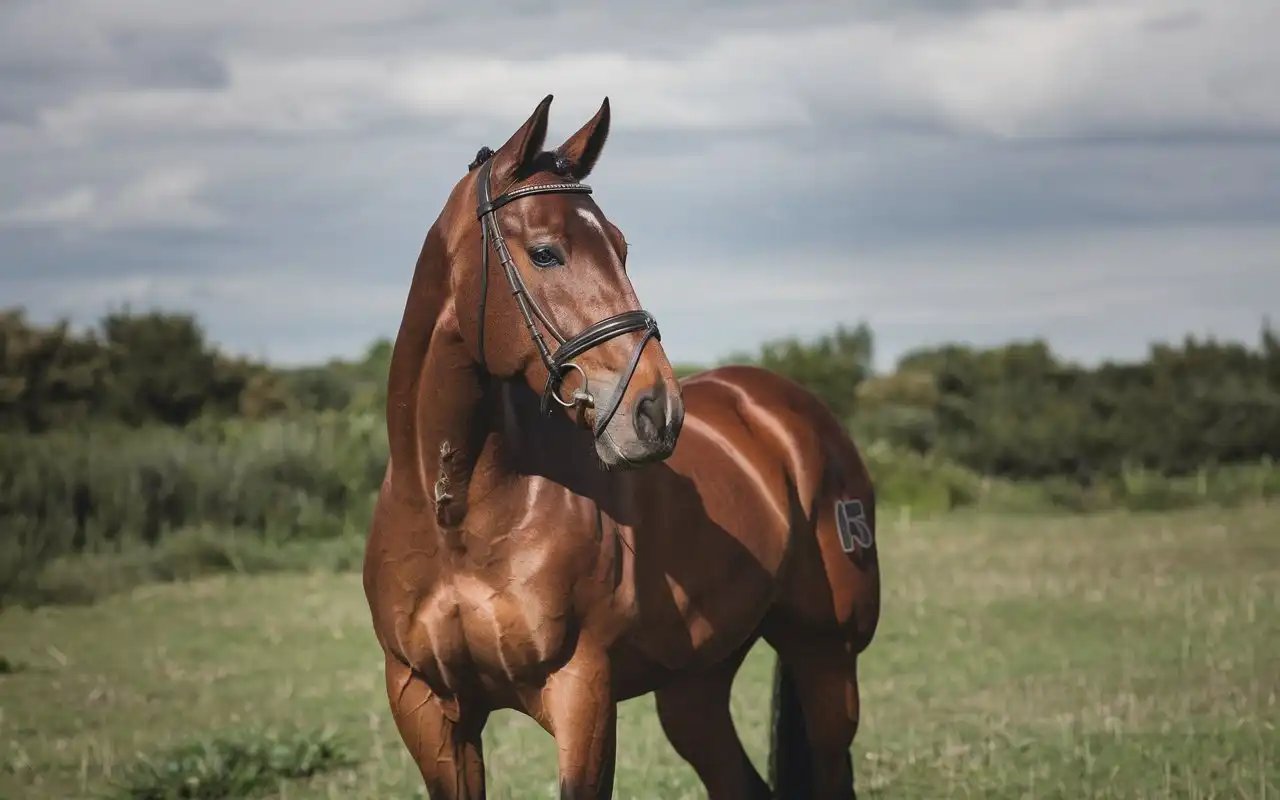Ringworm is a common fungal infection in horses. It causes round, scaly patches and hair loss on the skin. It isn’t life-threatening. But it can spread and disrupt if not fixed. It’s vital to know the causes, treatments, and prevention methods. They ensure a quick recovery. Swift action helps maintain a healthier, stable environment. It reduces the risk of further infections. Regular monitoring and good hygiene are key to managing this condition. They allow horses to return to normal activities without long setbacks.
Table of Contents
Introduction
What Is Ringworm in Horses?
Ringworm in horses is a highly contagious fungal skin infection caused by dermatophytes. It causes circular lesions, hair loss, and scaly or crusty skin. Contrary to its name, it is not caused by worms but by fungi that thrive in warm, humid environments. Horses, particularly those in crowded or unsanitary conditions, are at a higher risk. To manage this infection, we must first know its cause.
Importance of Early Diagnosis
Early diagnosis is essential for managing ringworm in horses. If neglected, it can quickly spread among horses and to nearby humans or animals. Quick identification enables effective treatment. It lowers the risk of infections and helps prevent outbreaks in stables. Taking prompt action is vital to safeguard the health of both horses and those around them. Regular monitoring is key. It helps catch ringworm cases early. This keeps a healthy environment for all.
Common Misconceptions About Ringworm
A common myth is that ringworm thrives only in dirty environments. Cleanliness matters, but well-kept stables can still face outbreaks under specific conditions. Another misconception is that only young horses are affected. Adult horses are more vulnerable. But, they can catch the infection, especially if their immune systems are weak. Humidity, stress, and close contact with infected animals can help the spread. To prevent ringworm in any horse setting, it’s vital to maintain good hygiene and monitor all horses, regardless of age.

Understanding Ringworm in Horses
What Causes Ringworm in Horses?
Ringworm in horses is mainly caused by “Trichophyton” and “Microsporum” fungi. They invade the skin to feed on keratin. These fungi thrive in warm, damp places and can survive for months. Transmission sources are: shared grooming tools, contaminated bedding, and contact with infected animals. Horses with weak immune systems or health issues are at greater risk of infection. Regular cleaning and good hygiene can prevent outbreaks. This protects horses and reduces the spread of a stubborn fungal infection.
How Ringworm Spreads Among Horses
Ringworm spreads by contact with infected horses or contaminated items. These include saddles, brushes, and blankets. Fungal spores can adhere to surfaces, remaining infectious for long durations. This persistence raises the risk of indirect transmission. Also, spores can be in dust or on handlers’ clothes. This increases the risk of spreading the infection. We must monitor and manage places where horses interact to prevent outbreaks. Regular cleaning and disinfecting can reduce the risk of transmission. This will protect both horses and handlers from a common fungal infection.
Signs and Symptoms of Ringworm in Horses
Initial signs feature small, round patches of hair loss with scaly or crusty skin. If untreated, these lesions tend to grow larger. Some horses may itch, while others remain unaffected. This highlights the need for thorough visual checks. In severe cases, swelling may occur. There is also a risk of bacterial infections, which can hinder healing. Early detection and appropriate care are vital to prevent complications and promote recovery. Regular monitoring can help keep the horse healthy. It can also address any new symptoms quickly.
Diagnosing Ringworm in Horses
Physical Examination and Initial Observation
The diagnostic process starts with a comprehensive physical exam. Vets assess specific lesions, noting their shape and distribution on the body. A Wood’s lamp can help detect fluorescent fungi. However, not all fungi fluoresce under UV light. This examination is essential for determining the presence of fungal infections. By analyzing the lesions and using the Wood’s lamp, vets can decide on treatments. Careful observation and accurate identification are key. They are essential for diagnosing and managing the condition.
Lab Tests and Microscopic Analysis
To diagnose, we collect skin scrapings or hair samples from the lesions. We then examine them under a microscope. In some cases, cultures may be grown to identify the fungal species. These diagnostic methods are crucial for administering the appropriate treatment. They also help distinguish ringworm from similar issues, like bacterial infections or allergies. Accurate identification is vital for effective management. It prevents complications and allows for targeted therapy. This reduces the risk of misdiagnosis and ineffective treatments.

Treating Ringworm in Horses
Over-the-Counter Treatments for Ringworm
Mild ringworm cases are often treatable with antifungal products. Use shampoos, sprays, or ointments with miconazole or chlorhexidine. These treatments are widely available. Apply them to the affected areas as instructed. It is crucial to follow the treatment regimen. It usually requires repeating it for several weeks to fully eliminate the infection. Following the guidelines will improve recovery. It will prevent the condition from worsening. Always consult a healthcare professional if symptoms do not improve.
Prescription Medications for Severe Cases
For more severe cases, veterinarians may suggest prescription antifungal treatments. Oral medications like griseofulvin or itraconazole are often used for systemic infections. These drugs attack the fungi from within, aiding faster recovery. It’s vital to follow the vet’s instructions. This will avoid side effects and ensure effective treatment. Regular check-ins might be necessary to assess progress and change dosages as needed. Pet owners should watch for unusual reactions. They should discuss any concerns with their vet. A strong commitment to the treatment plan is essential. It is key to the pet’s recovery from fungal infections.
Home Remedies and Natural Treatments
Some horse owners choose natural remedies alongside conventional treatments. Use diluted apple cider vinegar on lesions. It has antifungal effects. Likewise, properly diluted tea tree oil may provide relief. Although these remedies can aid recovery, they shouldn’t substitute for professional care. Incorrect application may hinder healing. It’s crucial to consult a vet before using these alternatives. They must complement prescribed treatments. Natural options can enhance wellness, but they need careful handling. The best outcomes for equine health come from a balance. Use both methods and professional advice.
Preventing Ringworm in Horses
Maintaining Hygiene in Stables
Maintaining a clean, well-ventilated stable is essential to prevent fungal growth. Regularly replace damp bedding to keep the area dry. Disinfect grooming tools, saddles, and blankets after each use to eliminate potential spores. Investing in antifungal cleaners can reduce fungal spores. This will promote a healthier space for your horses. Consistent upkeep not only protects the animals but also enhances their well-being. These precautions will create a safer, cleaner environment. They will reduce fungal infection risks. This will keep the horses healthy and comfortable.
Quarantine Measures for Infected Horses
Isolating infected horses right away is essential to prevent an outbreak. Use distinct grooming tools and feeding equipment only for quarantined animals. Limit contact with other horses and staff until the infection is gone. Disinfect all areas the infected horse has entered. This will eliminate any contamination. This strict protocol protects healthy horses. It also contains the infection quickly. We must also monitor the quarantined animals. This is to check their recovery and prevent any spread. Prompt action and attention to hygiene can significantly mitigate the risk of transmission.
Managing Recurrence of Ringworm in Horses
Strategies to Prevent Reinfection
Preventing reinfection requires thorough cleaning and disinfecting of all stable equipment and surfaces. Use a diluted bleach solution or veterinary-grade disinfectants to eliminate lingering spores effectively. Regular inspections of horses are essential to catch early signs of infection. If any symptoms arise, take prompt action to address them. Consistent hygiene practices can significantly reduce the risk of transmission within the stable. Train all staff in proper cleaning protocols. This will keep a safe environment for the horses. Vigilance and a quick response are key to controlling infections. They protect the health of all animals in the stable.
Long-Term Care Tips
Long-term prevention focuses on enhancing the horse’s well-being. A nutritious diet, rich in vitamins and minerals, boosts the immune system. It helps fight infections. Regular vet checkups are vital for health. Reducing stress boosts a horse’s resilience. These practices reduce the risk of fungal problems. They keep the horse healthy and vibrant. Horse owners can greatly improve their horses’ lives. They can also prevent health issues. To do this, they should prioritize nutrition, veterinary care, and a stress-free environment. These proactive measures are essential for lasting wellness in horses.
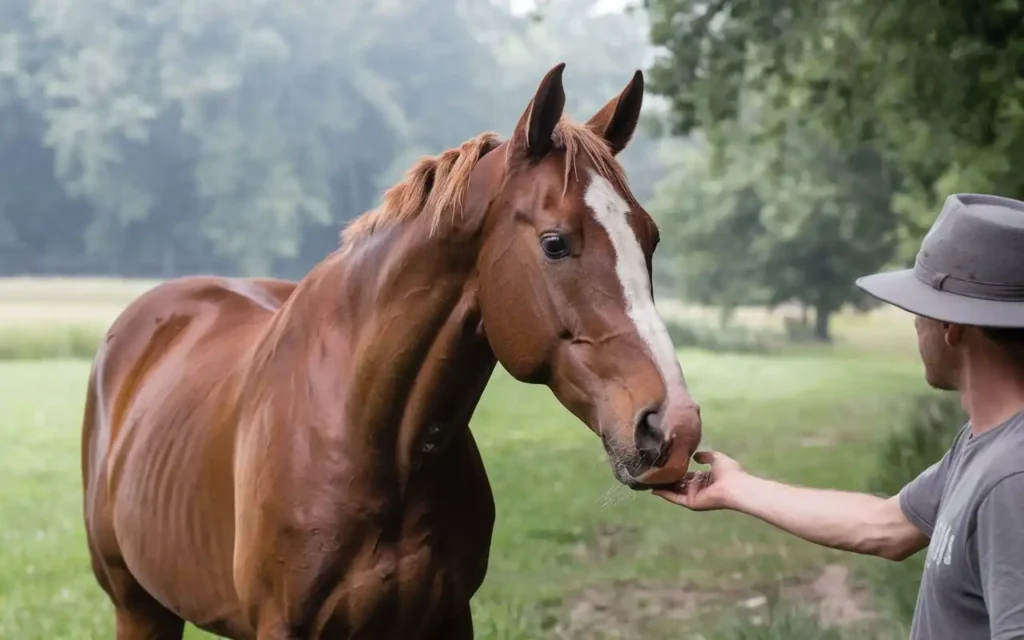
Recap of Key Takeaways
Managing ringworm in horses demands attentiveness and proactive strategies. To stop outbreaks and ensure a quick recovery, we must: detect early, treat regularly, and keep clean. A clean environment and good horse care greatly reduce the chance of reinfection. Horse owners should regularly disinfect stalls, equipment, and grooming tools. They must also ensure their horses get proper nutrition and care. It’s crucial to monitor horses for skin issues. Prompt action can prevent the spread of ringworm. By prioritizing these practices, owners can protect their horses’ health. This will reduce the risk of future infections.

